Poaching an egg can feel intimidating for some, but with the right technique, it’s incredibly easy and results in a perfect, silky-smooth egg with a soft yolk. A poached egg on toast with a slice of avocado is one of my favorite quick breakfasts. If you want to know how to whip up this easy breakfast, read below.
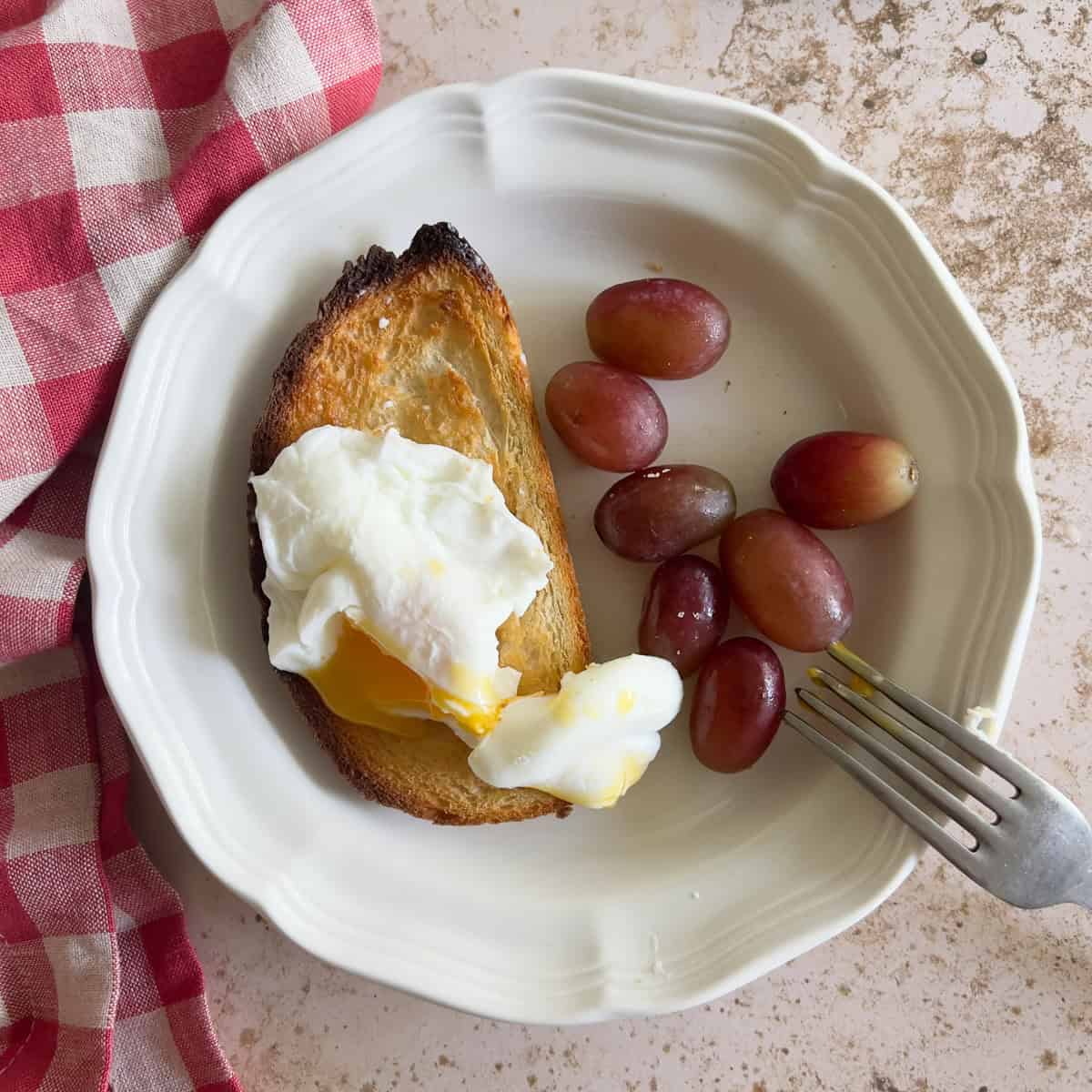
Would you like to save this recipe?
Recipe Notes
- I recommend using fresh eggs. If you don’t have truly fresh ones, you can still poach them but consider using a splash of vinegar and also be careful.
- Adding Vinegar to the boiling water lower the waters pH value. Add the vinegar before adding the egg to help the egg white to set faster, this step is optional. You just need a small amount, about 1 teaspoon of white vinegar for 2-quarts of water.
- An easy way to give your poached eggs some zing is to swap in white, black, smoked paprika or slap ya mama seasoning.
- Gently drop the egg near the surface of the water to keep it from breaking.
- Add a splash of white vinegar to the water if your eggs are older or you happen to want more shape control.
- Skim away any stray wisps of white floating in the water with a sieve for a cleaner appearance.
Common Problems and How To Fix
What if the egg whites spread out in the water?
This could happen if your eggs are not fresh. You can try adding a teaspoon of vinegar to help the whites coagulate faster, but the best solution is to use fresh eggs.
Multiple eggs crowding and sticking together
Adding too many eggs at once lowers the water temp and causes them to clump. Poach 1–2 eggs at a time.
Why did my egg stick to the bottom of the pan?
Stir the water into a gentle vortex and drop the egg in the center, the movement keeps it suspended. Make sure the water is deep enough water (about 4 inches) so the egg has time to set before reaching the bottom.
Steps to Make the Perfect Poached Egg
Step 1. Fill a medium saucepan (2-quart) with about 3–4 inches of water. Heat it until small bubbles start forming, a low simmer, not boiling. Add 1 teaspoon of white vinegar.
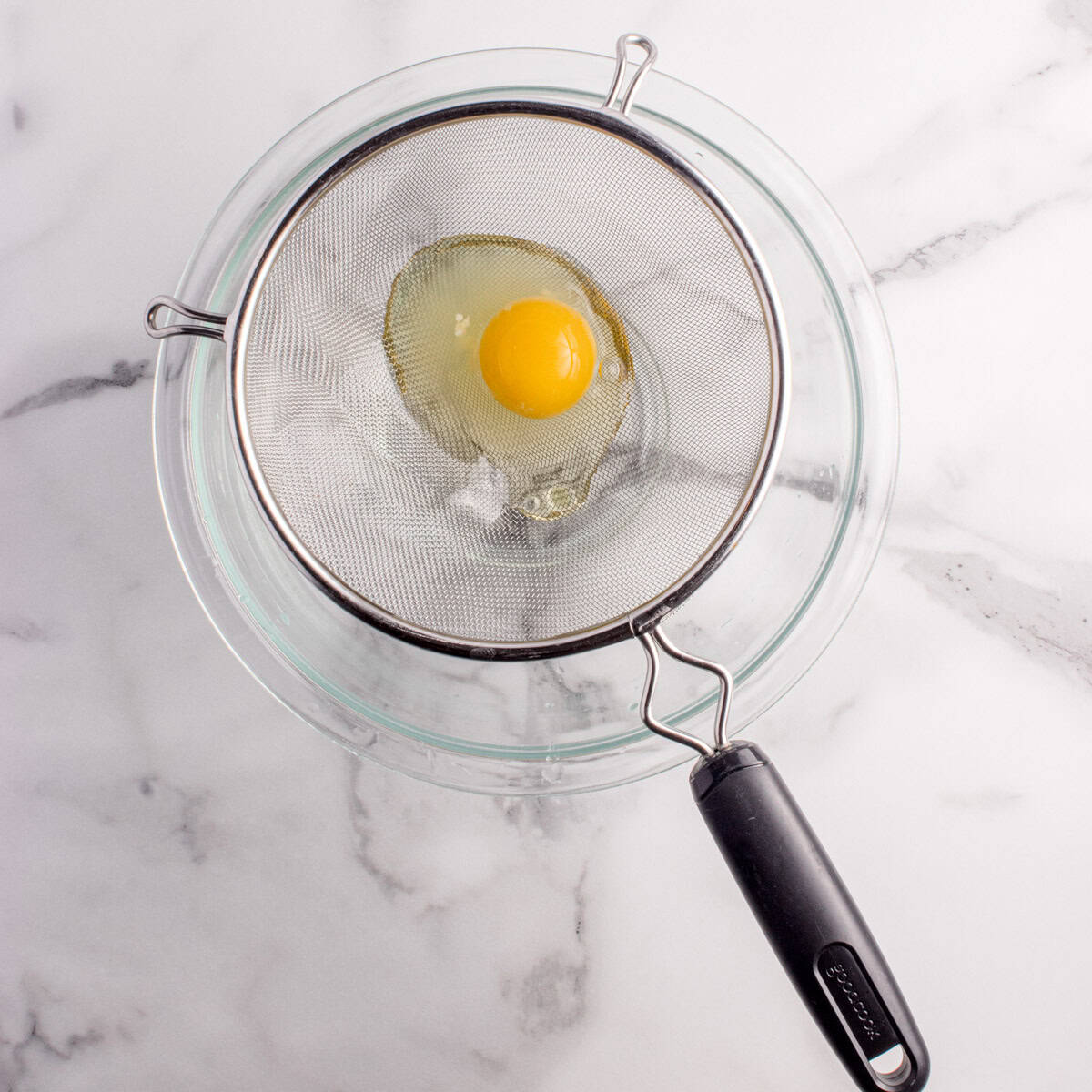
Step 2: Crack the egg into a fine-mesh sieve set over a bowl to strain out any thin, watery whites. This step gives you a cleaner, more compact poached egg.
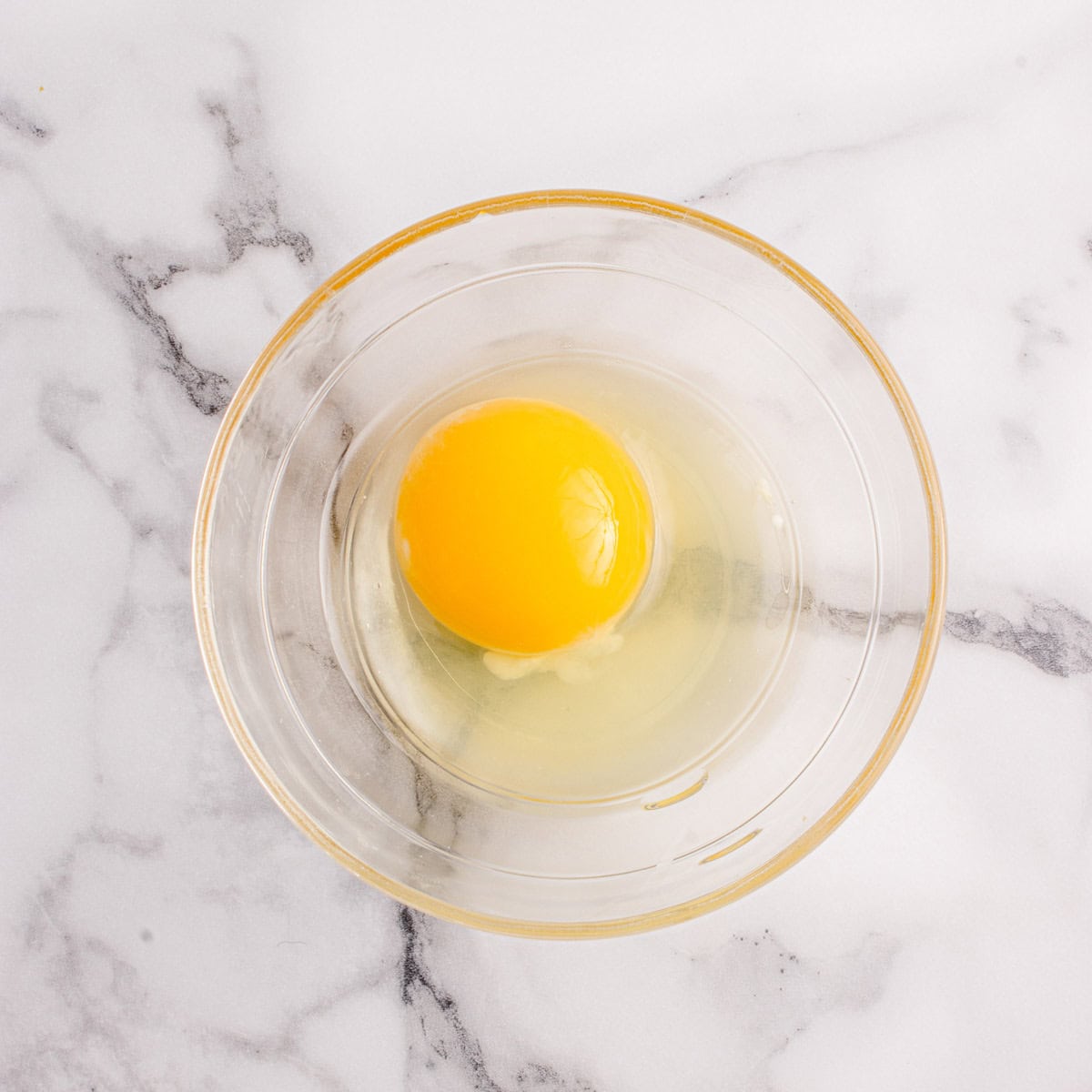
Step 3: Transfer egg to bowl transfer the strained egg to a small bowl or cup so you can ease it into the simmering water.
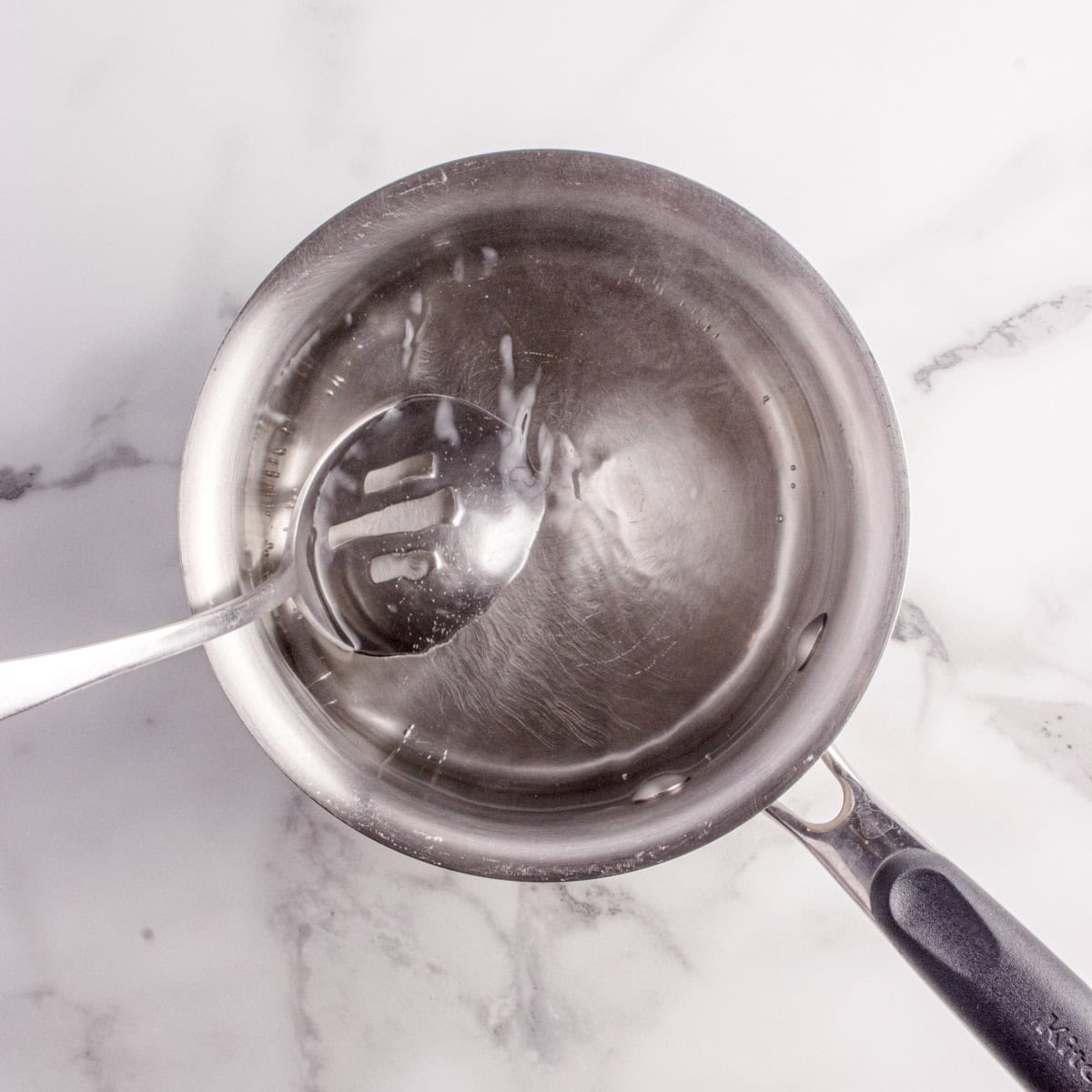
Step 4: Lower the bowl close to the water’s surface and slowly slip the egg in. Give the water a soft stir once or twice so the egg doesn’t stick to the bottom. If you’re poaching 2 eggs, add them one at a time, about 30 seconds apart.
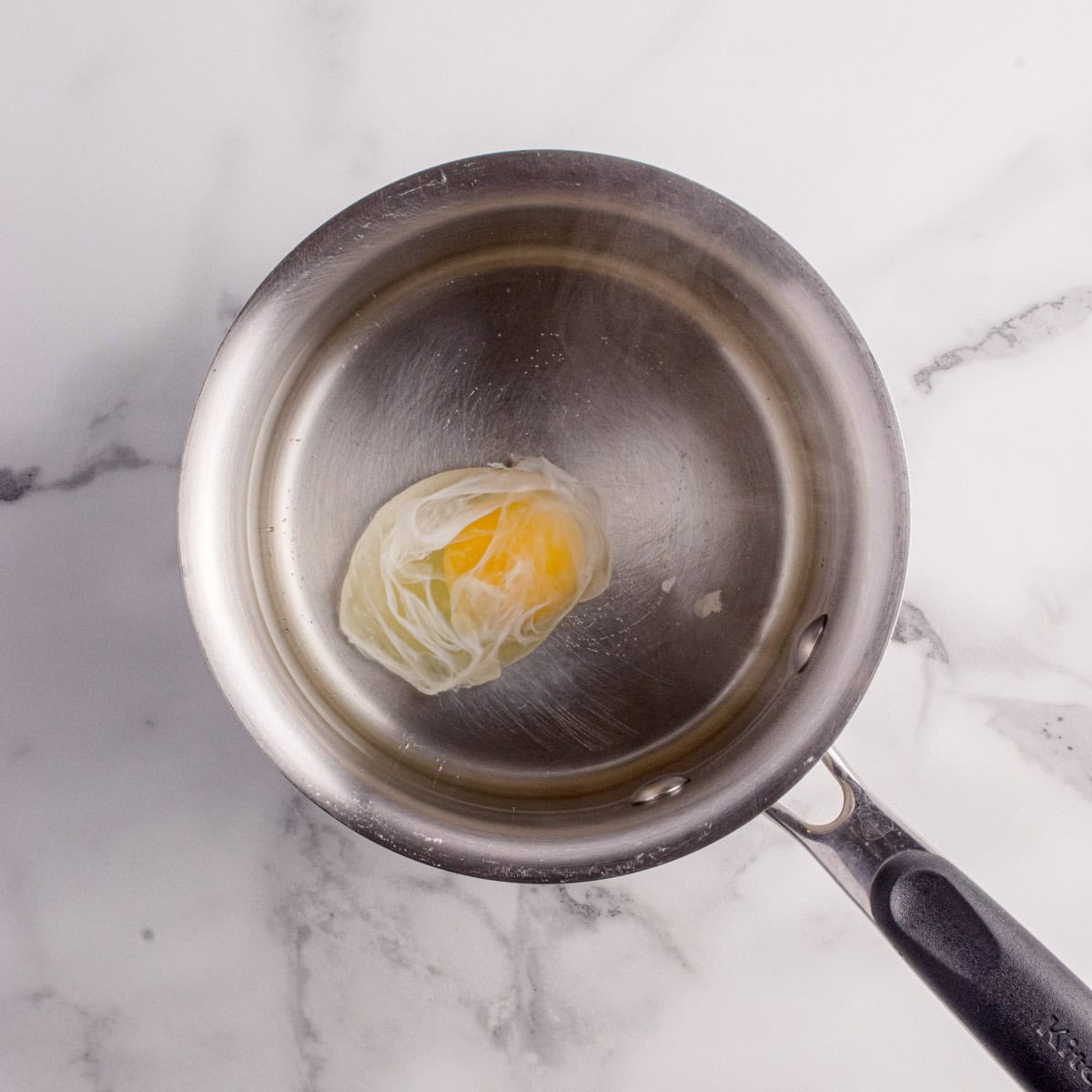
Step 5: Let the egg cook for about 2½ to 3 minutes. You’ll know it’s ready when the white looks set and opaque, but the yolk still looks soft and a little jiggly. Be sure to keep the water calm and don’t let it boil.
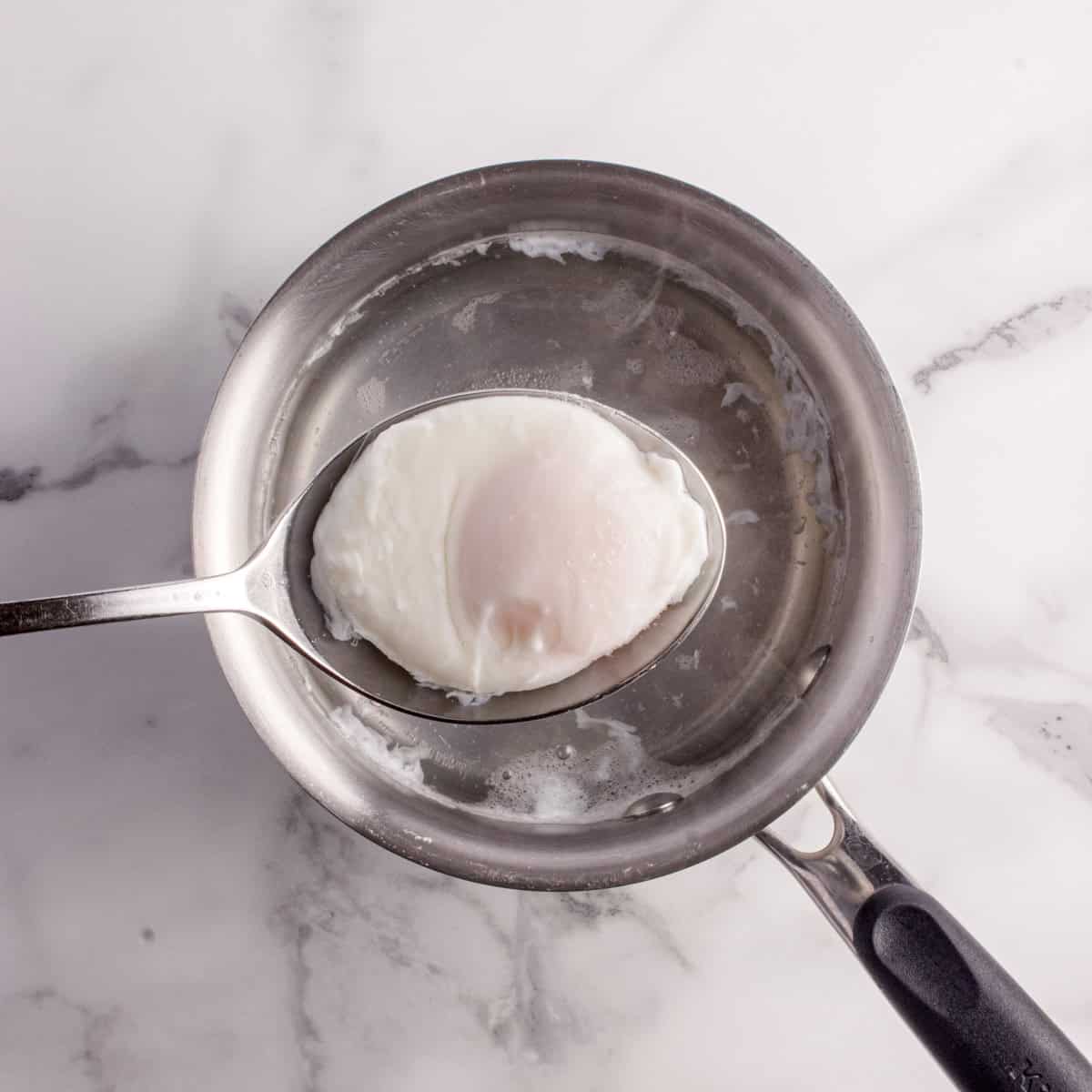
Step 6: Lift the egg out with a slotted spoon and, if you have one, rest it on a paper towel (optional). Pat it gently to remove extra water (this keeps your toast from getting soggy).
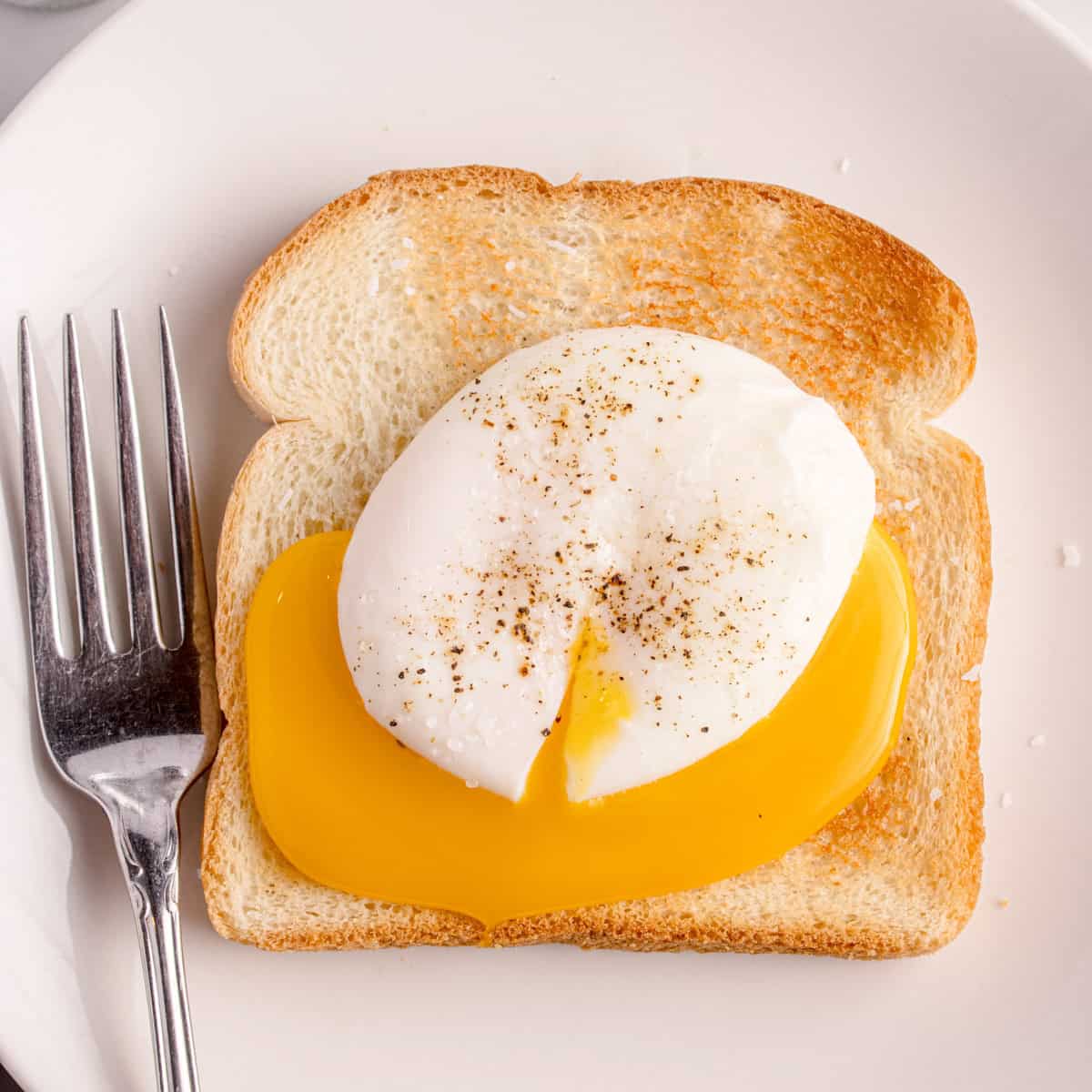
Step 7. Sprinkle it with a pinch of sea salt and a little pepper, and serve it immediately on toast, avocado, rice, greens, whatever you like.
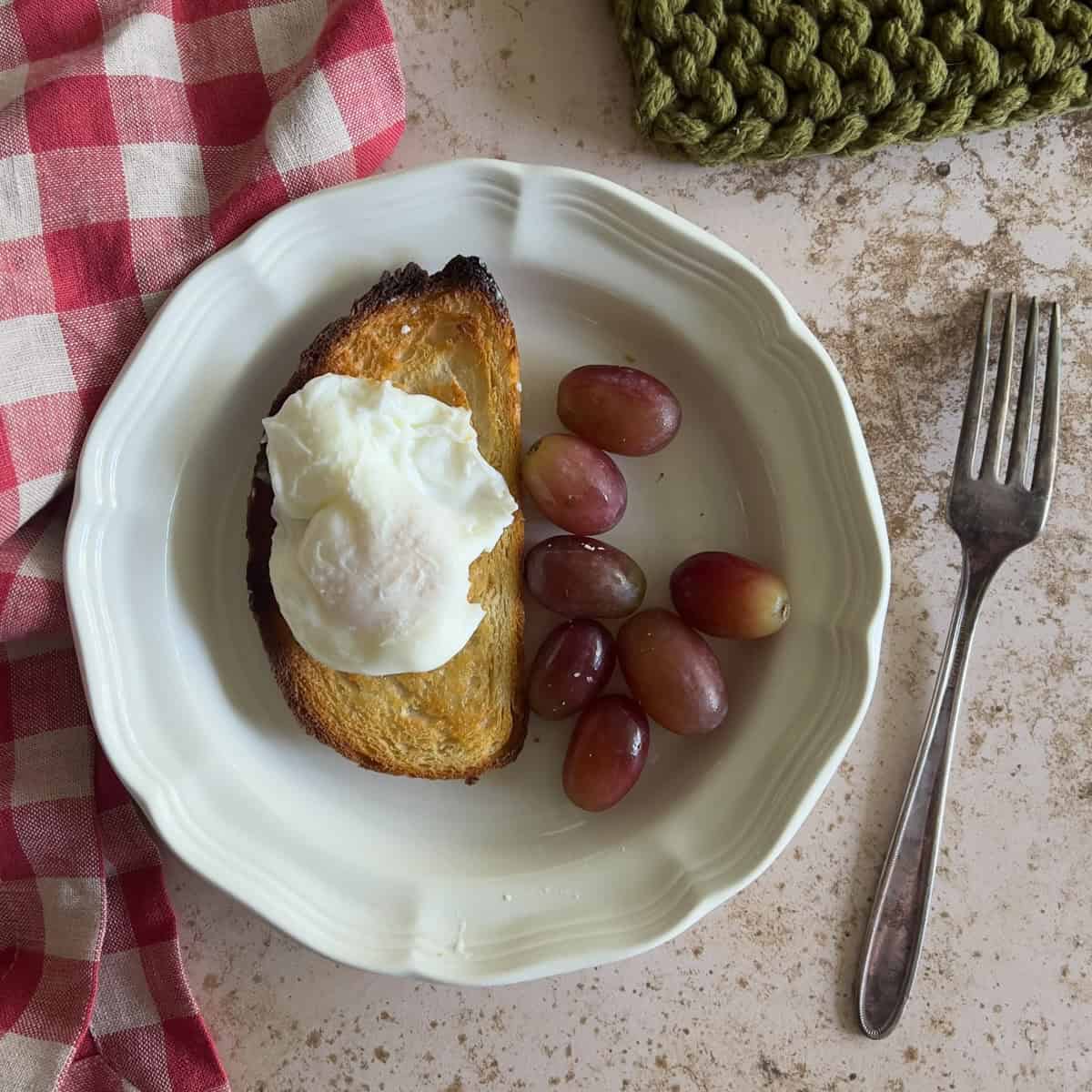
Poached Eggs
Ingredients
Equipment
Recipe Directions
- Fill a medium saucepan with about 3–4 inches of water. Heat it until simmering, small bubbles start forming on the bottom but not boiling, just hot enough to see steam (around 180–190°F). Add the vinegar. Reduce the heat to maintain a gentle simmer.
- Crack the egg into a fine-mesh sieve set over a bowl to strain out any thin, watery whites. This step gives you a cleaner, more compact poached egg.
- Gently transfer the strained egg to a small bowl or ramekin so you can ease it into the simmering water.
- Lower the bowl close to the water's surface and slowly slip the egg in. Give the water a soft stir once or twice so the egg doesn't stick to the bottom. If you’re poaching 2 eggs, add them one at a time, about 30 seconds apart and skip the stir.
- Let the egg cook for about 2½ to 3 minutes. You’ll know it’s ready when the white looks set and opaque, but the yolk still looks soft and a little jiggly. Be sure to keep the water calm and don’t let it boil.
- Lift the egg out with a slotted spoon and, if you have one, rest it on a paper towel (optional). Pat it gently to remove extra water (this keeps your toast from getting soggy).
- Sprinkle it with a pinch of sea salt and a little pepper, and serve it immediately on toast, avocado, rice, greens, whatever you like.

